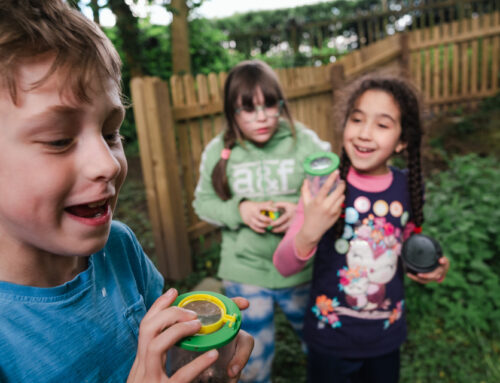What Do All These Acronyms Mean?
Has your ‘HLP’ child come home from school saying that they have been “given an IEP and a SENCo”? Did the pastoral co-ordinator contact you about ‘SEMH’ or an ‘EHCP’ ? It can be like another language! So, what do some of these terms and acronyms actually mean?
Education laws vary within the four nations of the United Kingdom, therefore, some of the acronyms listed are UK-wide while others vary according to nation. As new regulations may emerge and services or policies vary across the United Kingdom, always check up-to-date information with a reliable source.
See: Contact : Education in Northern Ireland, Scotland and Wales
HLP
HLP stands for High Learning Potential. Basically the same as saying ‘gifted’ or ‘more able’. The term high learning potential more accurately represents children who have the potential to achieve highly but may not currently be doing so and who need support to do so.
HLP children requiring extra help might be offered ‘pastoral’ (social or emotional) support with their special needs, as their challenges can be based in feelings, behaviours or physical problems rather than academic difficulties.
See Potential Plus UK’s page: High Learning Potential
SEN / SEND / SENCo / SENDCo / ALNCo
SEN / SEND is the acronym that stands for Special Educational Needs / Special Educational Needs and Disability. The SENCo / SENDCo / SENCO / SENDCO is the SEN(D) Co-ordinator; the specialist staff member or teacher who works to ensure these needs are met for the child. (ALNCo is the equivalent in Wales).
Schools in England are obliged to provide support to children with special educational needs. This is called SEN support.
Four areas of special educational need have been defined by the Government in their SEND Code of Practice (COP): 0 to 25 years. A child having significant difficulty in one or more of the following areas may well qualify for SEN support:
- Communication and Interaction
- Cognition and Learning
- Social, Emotional and Mental Health difficulties
- Physical and/or Sensory needs
See: GOV.UK : SEND code of practice: 0 to 25 years.
DME
Dual or Multiple Exceptionality – or DME – describes having both high learning potential and a special educational need.
The difficulties faced by DME children vary according to each individual’s personality, circumstances, unique SEND diagnosis and HLP profile. However, the more commonly seen challenges would be with executive function skills, asynchronous development, slow processing speed, poor handwriting, low self-esteem, social problems and high emotional sensitivity. A couple of familiar SEN areas for DME children also have their own acronyms: Sensory Processing Disorder, SPD, and Attention Deficit Disorder, ADD, or Attention Deficit Hyperactivity Disorder, ADHD.
It can be difficult for schools to identify a child or young person with DME as the SEND can mask their high learning potential – or the other way around. Such individuals must be formally assessed to ensure that they receive not only SEND support, but also challenging, enriching, enjoyable schoolwork that stretches their intellectual abilities.
See Potential Plus UK’s page: Dual or Multiple Exceptionality
SEMH
SEMH refers to Social, Emotional and Mental Health, which the Government’s SEND Code of Practice considers to be a special educational need. The term SEMH was brought in to replace BESD (Behaviour Emotional Social Development) and EBD (Emotional & Behaviour Difficulties) in an attempt to emphasise a young person’s underlying needs and challenges rather than any resulting problematic behaviours.
See: SEMH: SEMH Meaning – What does SEMH mean?
IEP / ISP /ILP / IDP
An IEP (Individual Education Plan), ISP (Individual Support Plan), ILP (Individual Learning Plan) or IDP (Individual Development Plan, in Wales) might be put in place by the SENDCo or lead teacher to provide a structured way forward for a child.
When dealing with HLP or DME, such a plan should set targets that not only support the child’s areas of difficulty, but also commit to differentiated academic work to challenge them intellectually and thereby support their mental health, (SEMH). It might also include adding them to the school’s Gifted and Talented / More Able register, if the school maintains one. For children who are dual or multiple exceptional, such a roadmap would also support their own personal SEND requirements; helping to increase focus if they had ADHD, for example, or catering for acoustic, lighting or movement needs in the case of SPD.
See our school advice sheets: S09 Challenge Plan for High Learning Potential – Student Proforma and S10 Example Challenge Plan for a High Potential Learner free to school members.
ENGLAND
EHCP
An EHCP (or EHC Plan) is an Education, Health and Care Plan. It is a legal document that sets out a child or young person’s special educational, healthcare and social needs, the support they require and their desired outcomes. Any special educational provision described in an EHCP has to be provided by their local authority.
If a child has significant or complex SEND needs that go beyond what a school can provide, the SENCo might request an ECHP needs assessment. In cases where this is not forthcoming, parents and carers can directly request consideration for an EHC assessment from their local council (otherwise known as the Local Authority, LA).
EHCPs have replaced the previous ‘statements of special educational needs’, which did not always have a positive image. There are advantages to an EHC Plan, as overhauled procedures should now centre around the views of the child and parent, thereby going a long way to ensuring meaningful support, outcomes and timeframes are factored in.
Additional one-to-one support in school is commonly provided under an EHCP and extra services or ‘agencies’ might be brought in, such as SALT – speech and language therapy – physiotherapy, behavioural experts or sensory impairment teachers.
Instead of harming future choices, an EHCP can actually give a child a priority place with school admissions. For example, out of catchment schools, (or others where standard admissions criteria are not met), are likely to offer a place if it can be shown that they are the most suitable school to offer provision under an EHCP. Certain special schools, too, will only offer their funded places to children with an EHC plan.
See IPSEA : Education, Health and Care plans
IPSEA and SENDIASS
IPSEA and SENDIASS are both places to turn to for help with areas such as your child’s SEND provision or EHCP assessment.
IPSEA is the Independent Provider of Special Education Advice. It is a registered charity (operating in England) and offers “free and independent legally based information, advice and support to help get the right education for children and young people with all kinds of special educational needs and disabilities (SEND).”
See: (IPSEA) Independent Provider of Special Education Advice
SENDIASS is the local Special Educational Needs Information, Advice and Support Service (also known as IASS). There should be an IASS Service in every local authority. With a website that helps all families find their local SENDIASS service, the Council For Disabled Children, CDC covers England and Northern Ireland and can also offer additional support to those with disabilities.
See: Council for Disabled Children : The Information, Advice and Support Services Network
WALES
The Additional Learning Needs (ALN) and Educational Tribunal Act passed in January 2018 brought reforms to special educational needs provision that replaced the term SEN with ALN.
From September 2020, SENCos became known instead as ALNCos, with schools given a few years to fully implement changes. Children with Additional Learning Needs became entitled to their own new Individual Development Plan, IDP, valid until age 25, with IEPs being phased out.
See:
- SNAP Cymru
- Help for families – SNAP Cymru
- https://Gov.Wales : Additional Learning Needs and Education Tribunal (Wales) Act
SCOTLAND
The Education (Additional Support for Learning) (Scotland) Act 2004, usually referred to as ‘the ASL Act’ and amended by the Education (Scotland) Act 2016, provides the legal framework that gives additional support to pupils facing barriers to learning. Individualised educational programmes, IEPs, are used in many schools and local authorities have legal duties under the ASL Act to identify and provide for pupils needing a Co-ordinated Support Plan, CSP.
See:
- GOV.SCOT: Additional support for learning: statutory guidance 2017
- Enquire – The Scottish advice service for additional support for learning
- Enquire : asl-key-facts.pdf
- SNAP (Scottish Network for Able Pupils)
NORTHERN IRELAND
The Special Educational Needs and Disability Act (Northern Ireland) 2016 formed the foundation for a new SEN Framework to reform how children with Special Educational Needs are identified and supported. The Covid-19 pandemic and significant Regulation changes led to the unusual step of consulting again, with public consultations running until March 2021 ahead of a lengthy implementation period.
Historically, an Individual Education Plan, IEP, would be written by the school usually when a child is on Stage 2, 3, 4 and 5 of the SEN Code of Practice. A Statement of Special Educational Needs would be issued for children who needed support via the Local Authority.
See:
About the author: Gillie Ithell is a writer and editor for Potential Plus UK with a B.A. degree in Modern Languages & Communication. Having worked internationally as content manager of classic board games and ‘edutainment’ software, Gillie now writes to inspire others like herself; on a daily journey with High Learning Potential.






